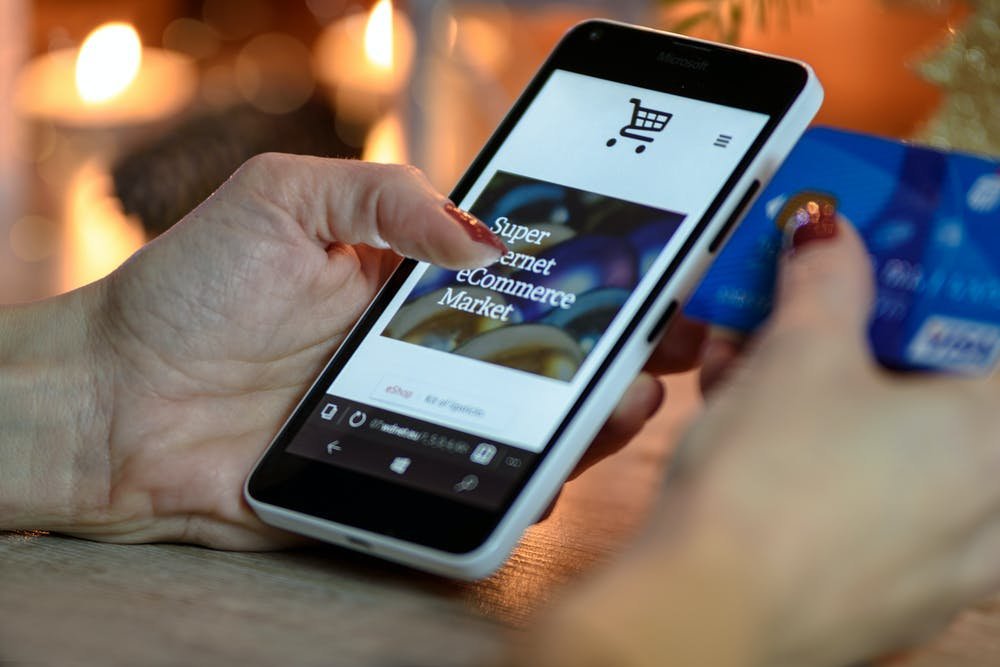Mobile commerce can be an outstanding tool for eCommerce sites, but what does the future of this technology look like? For nearly two years, retail stores have been hit hard by a downturn in sales and daily customer volume. In particular, companies that relied mostly (or solely) on in-person transactions saw the greatest losses. Needless to say, it’s not surprising eCommerce accounted for 19.6% of total retail sales in 2020—a dramatic 32.4% increase from the previous year.

As pandemic fears have begun to subside in 2022, the masses have resumed our beloved in-store shopping. This begs the question: with the resurgence of brick-and-mortar stores, will mobile commerce fade to black faster than a smartphone on 1%?
Short answer: no! The eCommerce market has exploded, and pandemic or not, it is here to stay. Of course, nothing beats experiencing a product before you buy it. Traditional in-person stores are predicted to still make up around 70% of retail sales in 2025. That being said, the convenience of online shopping is so valuable that the presence of digital commerce platforms will continue to see an upward trend. Similar to the role of artificial intelligence in people-oriented industries, no one’s coming for anyone’s job. AI and humans can work in tandem to achieve something great—much like physical and digital shopping experiences.
While forecasts are not that technology is going to replace physical stores, it is predicted that online businesses will supplement the in-person experience and provide companies opportunities to compete. The social component of in-person shopping and the ease of mobile commerce work well together to provide the most optimal customer experience.
Mobile Commerce and eCommerce During the Pandemic
During the pandemic, many businesses paid the price for neglecting their digital presence. eCommerce is especially growing in its subset, mCommerce, which refers to sales completed on a mobile device. B2B transactions are increasingly relying on third-party apps and software products to make business processes smoother. In December of 2021, sales from mobile devices beat pre-pandemic levels by a staggering 47%. If companies want to be leaders in their respective industries, a robust mobile shopping experience on the internet is necessary.

After seemingly endless quarantine periods, we rely on our mobile devices more than ever. Social media companies, like Facebook and Instagram, started implementing online shopping features to facilitate eCommerce among their users. If your business isn’t prompting customers to shop from their smartphones, you are falling victim to a bygone era. Mobile commerce is predicted to comprise over half of eCommerce by the end of the year. Storefronts won’t be going away, but all successful modern businesses will need to offer an equally appealing digital storefront as well.
The Connection Between Physical and Online Shopping Experience
The most forward-thinking companies don’t put all their eggs into one basket. Both physical stores and their corresponding online shops need to exist in tandem. It’s incredibly valuable to provide a quick, easy, and seamless experience for consumers, regardless of if it’s through a window display or a tablet.
When customers interact with businesses online, their behavioral trends can be recorded in ways that are impossible in-store. Knowing a person’s shopping history allows companies to advertise uniquely tailored products to that particular person’s wants and needs. This targeted approach to online advertising is an example of how online shopping can help physical stores, instead of competing with them. Customers could be recommended products online and be compelled to try them out in person. Getting the customer in the door is half the battle!
Many are turning to mobile commerce for errands that they never would have before. Recent research has found that, during the pandemic, 20% of consumers started visiting websites to buy groceries, 19% for restaurant to-go orders, and 23% for video conferencing software. This is why businesses in all industries need to invest in their online systems. The habits of the last two years have bled into every aspect of our lives, and they will remain long after Covid-19 has dissipated.
The value in having both physical and digital platforms is that every customer will have their needs fulfilled. Some customers prefer internet shopping, while others need to hold an item before buying it. Regardless of what the consumer wants, companies must excel in meeting everyone’s expectations.
Why Mobile Commerce Is the Best Application for Your Business
Great, you’ve read the room and have committed to implementing a mobile commerce strategy into your business plan. How do you get started? A great first step is to develop a mobile app to enhance your customer’s experiences.

Just a few of the benefits retailers offering mobile apps reap are:
- Attract customers to stores
- Market and sell more goods
- Acquire data for customer research
- Simplify the checkout process
Once customers walk into a store, the odds that they buy products they didn’t plan on purchasing beforehand increases dramatically. Advertising on a person’s phone could be the difference that makes them take a shopping trip. Upselling and cross-selling become automated and more efficient when consumers are buying your products through mobile shopping. The data required to suggest products to people comes from the same customer interactions with the online eCommerce platform. This means that, as the customer does more and more shopping with the company, the easier it becomes to get the customer coming back in the future.
It’s worth noting that mobile apps are generally much more interesting to engage with than websites. They make the consumer feel more connected to the brand, and there is ample opportunity to offer in-app loyalty programs/rewards to drive consumers into physical storefronts. Again, getting the customer in the door (physical or digital) is half the battle.
Conclusion
Smart managers think long-term and can use current trends to predict the future. At the top of this list is the understanding that the gap between physical and online shopping needs to be bridged. Creating a balanced approach to customer interaction is what allows companies today to satisfy everyone.
To attract and maintain loyal customers, advertising and collecting data from mobile devices is an effective choice. Mobiecom by Zobrist provides a comprehensive, modern mobile commerce experience to your customers. Integrating the physical and digital spaces is integral to the future of your business.
Contact Zobrist for industry-leading software solutions today!




